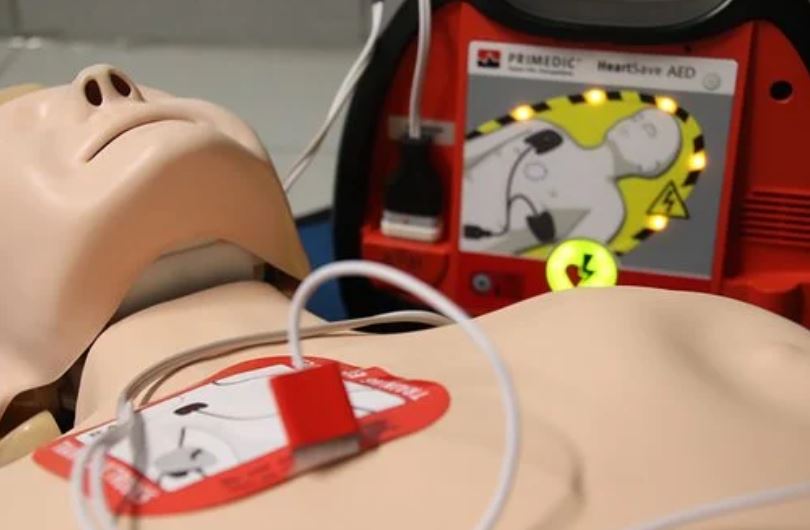Sudden cardiac arrest (SCA) is the leading cause of death in the U.S. When the heart suddenly stops, victims have just minutes to get the help they need. There are various reasons for the heart to stop suddenly, however, most cases involve some sort of exertion. That’s why most sports facilities and gyms often keep a portable AED for their members.
An AED or automated external defibrillator is an emergency medical device that can help restore a regular heartbeat to victims that have suffered a cardiac arrest. When used properly, an AED will send an electric shock into the victim’s chest area to restart the heart to normal rhythms.
The key to the survival of a heart attack victim is having someone who knows how to properly administer an AED in a crisis situation. The right tools in the right hands can help to save a life. Gym owners can find extra resources for dealing with medical emergencies online. Let’s take a step-by-step look at how to properly use an AED.
What to Do Before Using an AED
The first step towards helping a victim of a heart attack is to recognize when there is a problem. Patients that are having a cardiac arrest will often collapse or become unconscious. When you see someone collapse, or suddenly become weak and are holding their chest, you may be dealing with a cardiac arrest.
Before you go straight to a defibrillator, you need to call in some help. When you suspect that someone is having a cardiac arrest, you need to call 911 for help. Give the operator the details of the situation and your location so they can reach you quickly.
The next step to take is to start hands-only CPR. Make sure the victim is lying on a flat surface. Place your hands directly below the lower edge of the rib cage and start compressions. Your hands should be overlapped, and compressions should be as firm as you can provide. Continue chest compressions until the victim regains consciousness or a heartbeat can be identified.
The final step is to use the AED. If there is an AED on-site, you need to ask someone to get it to you as soon as possible. The use of an AED can significantly increase the chances of survival for cardiac arrest victims.
How to Use an AED
AEDs are designed in conjunction with the American Heart Association and can be crucial to a patient’s survival if used correctly in a cardiac arrest emergency. Follow these steps to use an AED:
- Turn the power on the AED and follow the audio instructions.
- Remove all clothing surrounding the patient’s chest including undergarments.
- Follow directions for applying electrode pads to the bare skin. Make sure that the skin is completely dry before application.
- Allow the AED unit to analyze the person’s heart rhythms. Do not touch the victim during this process as it can interfere with the analysis.
- If the AED recommends giving the victim a shock, it will let you know. For fully automated AED units, the shock will be given automatically. Do not touch the victim during this process. For semi-automated AED units, you will be notified when to press the shock button.
- Continue CPR and allow the AED to reevaluate the patient every two minutes.
How to Use an AED On a Child
A parent’s worst nightmare is having their child in a life and death situation. Sudden cardiac arrest is less common in children, but there are other accidents that can stop your child’s heart, including drowning. If your child has no heartbeat, using an AED is your best chance to help them recover. Using an AED on a child is basically the same as an adult but with a less powerful charge.
Most AED units come equipped with a child button or a child key that is inserted into the unit to change the charge setting. If you need to use an AED on a child, follow these instructions:
- Turn on the AED unit and follow the audio instructions
- Remove all clothing around the upper body and ensure that the skin is dry.
- Apply pediatric electric pads to the chest and back.
- Allow the AED to analyze the child’s heart rhythms.
- Deliver the shock if needed. Do not touch the child while the shock is being administered.
- Continue CPR and allow the AED to reanalyze the heart rhythms.
Using an AED to help a cardiac arrest victim can significantly increase their chance of survival. These complex machines are easy to use in an emergency and should be kept in a safe and accessible location for easy retrieval.




